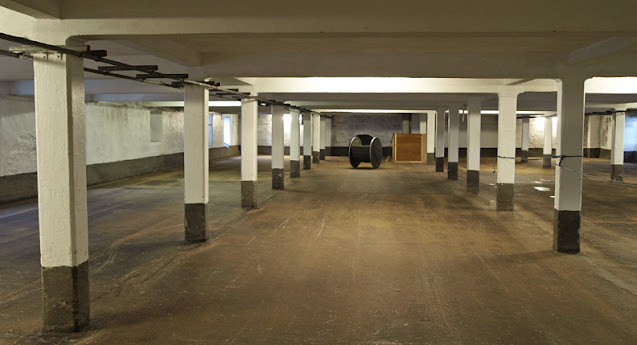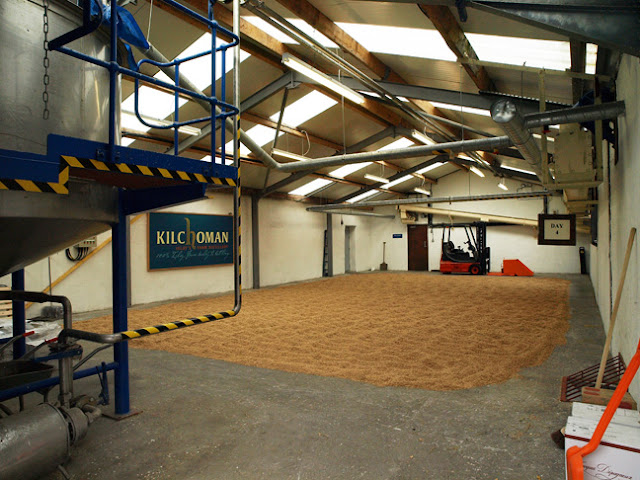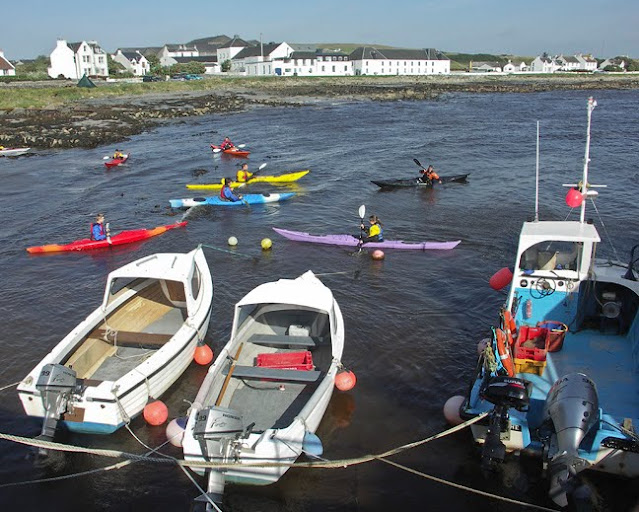The first two are a couple photos of barley quietly germinating on the malting floor at Laphroaig. It's time, labour, and space intensive to malt this way - that's why few distilleries do it for themselves any more. I'm thinking the process was only undertaken after the establishment of distilleries as legal entities able to occupy a relatively large footprint, the first arguably founded sometime during the last quarter of the 18th century. Prior to the luxury of a malting floor, I suggest that most Scotch whisky must have been made with unmalted barley.
I also suggest you pick up one of Iain Banks's works, with or without the M. His "Raw Spirit" got me reading him, and though it is not quite representative of his more widely distributed subject matter the book is a tasty dram, a roadtrip through the landscape of Scotch whisky.
a grain wheelbarrow at Laphroaig used to spread the steeped barley by hand across the malting floor
you've seen a similar image here before - raking the growing barley at Bowmore so it doesn't mat together into a tangled mess
a motorized barley rake at Laphroaig - undoubtedly a lot easier on the maltman's back!
after two days on the malting floor after three days on the malting floor
the malting floor at Springbank, Campbeltown
the malting floor at Kilchoman, Islay










